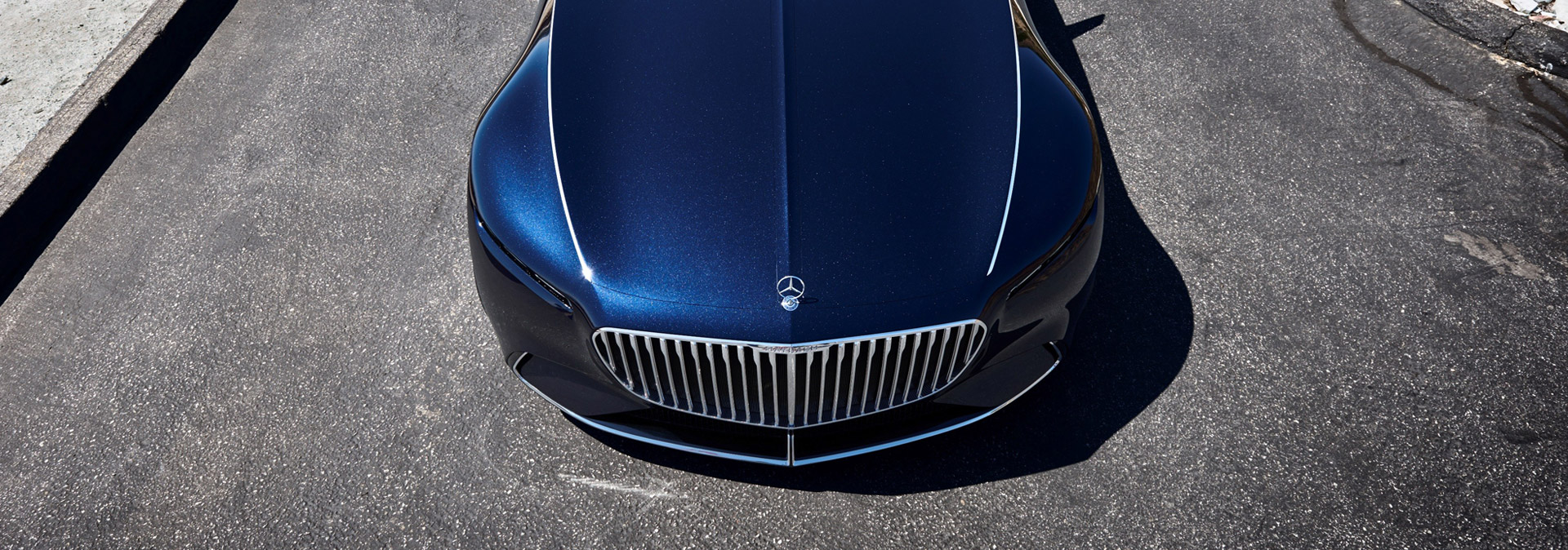Believe it or not, February 2018 marks a decade since the first Tesla Roadster rolled off the line as the first road-legal, all-electric production car of its type. It wasn’t just the first to offer a range of up to 200 miles on a single charge of its lithium-ion batteries – but also the only electric vehicle on the market that truly qualified as a “sports car” because of its looks, Lotus-derived chassis, sub four-second nought-60 acceleration time and 125mph top speed. Almost 2,500 were sold before the Roadster was axed in late 2012 and ever since the firm’s Model S saloon, Model X SUV and the recently launched, entry-level Model 3 have positioned Tesla as the world’s most pioneering maker of electric cars. Other marques have joined the all-electric charge too, notably BMW with its luxurious i3, and Nissan with its bestselling Leaf, while Renault has the Zoe and Hyundai the Ioniq. Add to these electric versions of the Ford Focus and Volkswagen Golf, throw in pledges by Volvo, VW and Jaguar to soon electrify their ranges – and it’s clear that volts are very much the future of automotive.
Other marques have joined the all-electric charge too, notably BMW with its luxurious i3, and Nissan with its bestselling Leaf, while Renault has the Zoe and Hyundai the Ioniq. Add to these electric versions of the Ford Focus and Volkswagen Golf, throw in pledges by Volvo, VW and Jaguar to soon electrify their ranges – and it’s clear that volts are very much the future of automotive.
All of the above might indicate that electric car development is largely focused on the type of sensible, everyday vehicles that lend credence to the thought that the demise of the internal combustion engine will equal the demise of driving fun. Yes, the Tesla Model S in much publicised “Ludicrous Mode” might be “faster than falling” – but what happened, you might ask, to the Tesla Roadster’s promise that all-electric cars can be a full-time hoot to drive?
Well, fear not. Because in a parallel electric car universe, numerous manufacturers are creating models that are luxurious, fabulous-looking and blisteringly fast – in short, pure electric cars are going hyper.
The name most people will recognise is Rimac, by dint of the fact that the fledgling Croatian firm supplied an example of its 1,224hp Concept-One ($1.2m) to television presenter Richard Hammond, who spectacularly lost control of it during Switzerland’s Hemberg Hill climb in June. The car rolled and caught fire, but luckily Hammond walked away relatively unscathed. The publicity did nothing to harm Rimac which, in just a decade, has evolved from the garden-shed hobby of founder Mate Rimac into a serious player on the electric supercar scene. The firm has succeeded where others have struggled in creating an all-electric car that is exceptionally fast – it has a top speed of 221 mph – but can also travel up to a claimed 220 miles on a single charge if driven gently.
The firm has succeeded where others have struggled in creating an all-electric car that is exceptionally fast – it has a top speed of 221 mph – but can also travel up to a claimed 220 miles on a single charge if driven gently.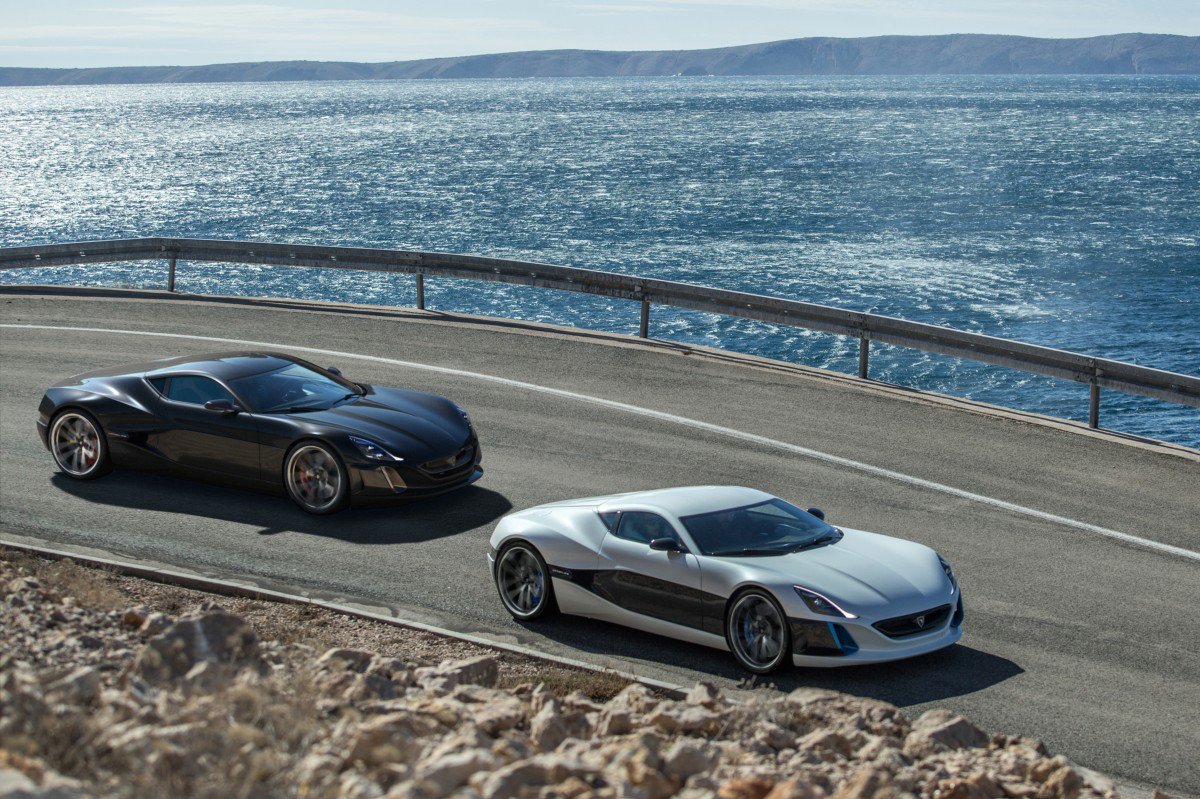 Each wheel has its own hugely powerful, liquid-cooled electric motor, with the car entirely developed around the powertrain and low-slung battery pack, which can be fully recharged in as little as 50 minutes. At this year’s Geneva Motor Show, Rimac announced that it would open official dealerships for the Concept-One in the US, Germany and the Middle East.
Each wheel has its own hugely powerful, liquid-cooled electric motor, with the car entirely developed around the powertrain and low-slung battery pack, which can be fully recharged in as little as 50 minutes. At this year’s Geneva Motor Show, Rimac announced that it would open official dealerships for the Concept-One in the US, Germany and the Middle East.
Any claim that the Concept-One is the world’s most extreme electric supercar, however, can be contested by the equally remarkable NIO EP9 which in May of this year achieved the lap record at the notorious Nürburgring Nordschleife with a time of six minutes, 45.9 seconds – the fastest the 12.9-mile circuit had ever been covered by any car, petrol or electric, prior to it being bested a fortnight later by McLaren’s hybrid-powered P1 LM.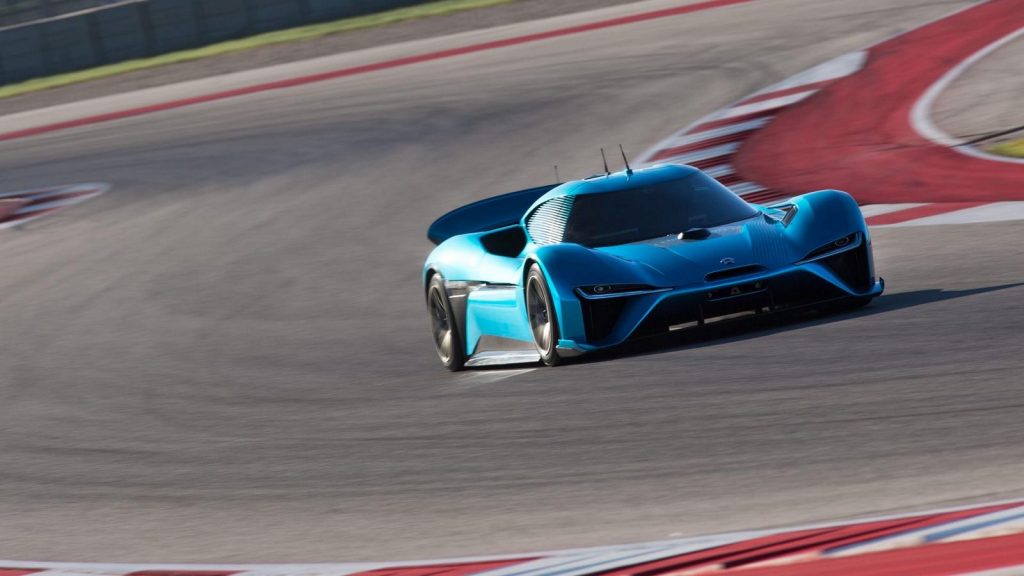 NIO is a global startup that claims to employ over 3,000 people in the US, China and Europe. Its bread-and-butter product is set to be the ES8, a Chinese-market, all-electric SUV. But it developed and built the EP9 – in a mere 18 months – to demonstrate its engineering capability. An initial batch of six were made and presented to Chinese investors, sparking a demand that has led to a further run of 10 that are being made available for general sale at the end of 2018 at $1.48m apiece.
NIO is a global startup that claims to employ over 3,000 people in the US, China and Europe. Its bread-and-butter product is set to be the ES8, a Chinese-market, all-electric SUV. But it developed and built the EP9 – in a mere 18 months – to demonstrate its engineering capability. An initial batch of six were made and presented to Chinese investors, sparking a demand that has led to a further run of 10 that are being made available for general sale at the end of 2018 at $1.48m apiece.
Electric cars are nothing new, of course, with one of the best-known historic manufacturers being Detroit Electric that produced 13,000 of the things between 1907 and 1939 – and counted Thomas Edison, John D Rockefeller and even Henry Ford’s wife Clara among its loyal customers. The Detroit Electric name was revived in 2008 and is now backed by a Chinese venture capital group, which earlier this year announced funding of $1.8bn to get production of a new all-electric sports car underway in late 2017. As “proof of concept”, the 21st-century Detroit Electric – which is actually based in the UK town of Leamington Spa – is building a limited run of a two-seater roadster called the SP:01, which offers a top speed of 155mph and a nought-60mph time of 3.7 seconds. The car, made to order from £120,000, features so-called “bi-directional charge technology” that enables the battery pack to be used to provide energy for other objects – even to the extent of being able to electrify the owner’s home. The UK is also the base of an ambitious startup called the Alcraft Motor Company, which recently unveiled a scale model of its Alcraft GT that is due to enter production in 2019 as a two-seater shooting brake with a predicted 600hp and super-rapid acceleration. The company is the brainchild of David Alcraft, a 70-year-old entrepreneur and car enthusiast who was partly inspired to develop an electric car as a result of his lifelong career in the pharmaceutical industry. Alcraft recruited former Morgan designer Matthew Humphries to pen the GT’s lithe and muscular bodywork and recently announced that Charles Morgan, former managing director of the Morgan Motor Company, is on board as director of innovation, having previously worked with Alcraft in an advisory capacity.
The UK is also the base of an ambitious startup called the Alcraft Motor Company, which recently unveiled a scale model of its Alcraft GT that is due to enter production in 2019 as a two-seater shooting brake with a predicted 600hp and super-rapid acceleration. The company is the brainchild of David Alcraft, a 70-year-old entrepreneur and car enthusiast who was partly inspired to develop an electric car as a result of his lifelong career in the pharmaceutical industry. Alcraft recruited former Morgan designer Matthew Humphries to pen the GT’s lithe and muscular bodywork and recently announced that Charles Morgan, former managing director of the Morgan Motor Company, is on board as director of innovation, having previously worked with Alcraft in an advisory capacity. But it’s not only forward-thinking, niche makers who are bringing the electric supercar to life. At this year’s Monterey Car Week in California, Mercedes-Maybach unveiled the jaw-dropping Vision 6 concept cabriolet, an extravagant, boat-tailed roadster that combines a modern take on Jazz Age style with a pure electric powertrain that provides a top speed of 155mph and a range of 200 miles. Like the Vision 6 coupé shown at Monterey last year, it is likely to remain no more than a concept, but much of the technology will inevitably find its way into the marque’s production models.
But it’s not only forward-thinking, niche makers who are bringing the electric supercar to life. At this year’s Monterey Car Week in California, Mercedes-Maybach unveiled the jaw-dropping Vision 6 concept cabriolet, an extravagant, boat-tailed roadster that combines a modern take on Jazz Age style with a pure electric powertrain that provides a top speed of 155mph and a range of 200 miles. Like the Vision 6 coupé shown at Monterey last year, it is likely to remain no more than a concept, but much of the technology will inevitably find its way into the marque’s production models.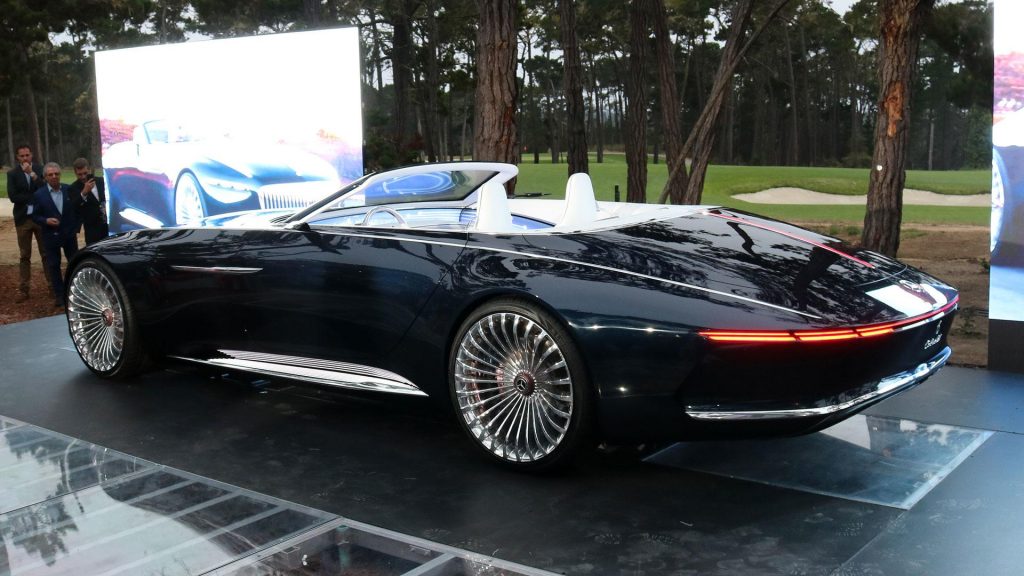 Aston Martin, meanwhile, is ahead of the game having confirmed that production of its first all-electric car, the RapidE, will commence in 2019. Just 155 examples of the proposed 1,000hp, four-door grand tourer will be built, but it will pave the way for further electric-powered Astons as part of their vision to “successfully embrace radical change”.
Aston Martin, meanwhile, is ahead of the game having confirmed that production of its first all-electric car, the RapidE, will commence in 2019. Just 155 examples of the proposed 1,000hp, four-door grand tourer will be built, but it will pave the way for further electric-powered Astons as part of their vision to “successfully embrace radical change”.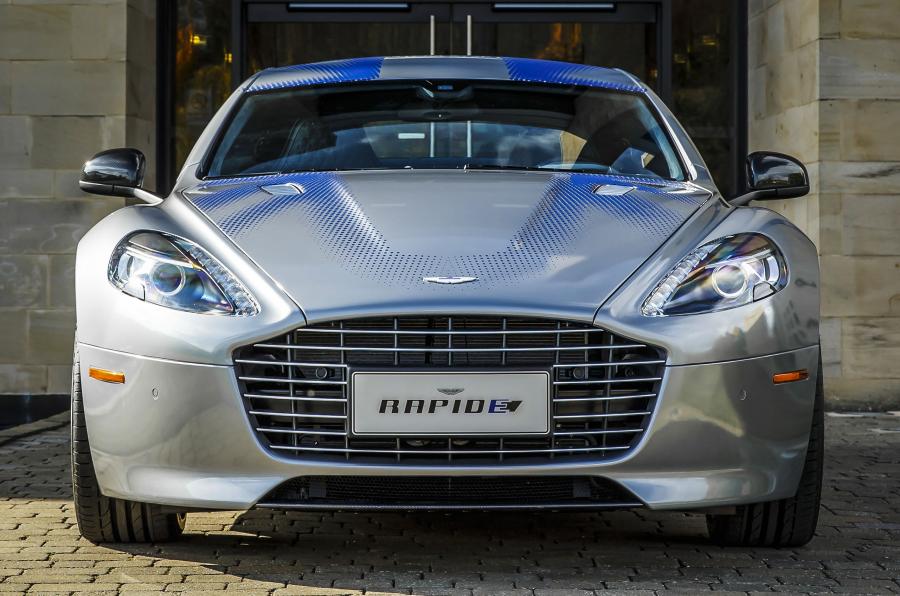 Jaguar, too, is getting ready to release a production version of its all-electric iPace crossover in mid-2018 – and it is set to offer exhilarating performance with a purported 395hp instantly on tap and a nought-60 time of four seconds. But what really earns the iPace a mention in a piece about superfast all-electric cars is the fact that the marque’ special vehicle operations division is developing a souped-up, competition version of the iPace for an eTrophy race series being staged to support next year’s Formula E fixtures.
Jaguar, too, is getting ready to release a production version of its all-electric iPace crossover in mid-2018 – and it is set to offer exhilarating performance with a purported 395hp instantly on tap and a nought-60 time of four seconds. But what really earns the iPace a mention in a piece about superfast all-electric cars is the fact that the marque’ special vehicle operations division is developing a souped-up, competition version of the iPace for an eTrophy race series being staged to support next year’s Formula E fixtures.
Perhaps the firmest evidence that the electric supercar market is becoming diverse can be seen in the truly wild-card announcement that Jaguar has electrified a 1960s automotive icon.

Yes, there now exists an electric version of the E-Type that is faster, smoother, quieter and cheaper to run than the original, yet remains every bit as good-looking. The car, dubbed E-Type Zero, is based on a 1968 Roadster that has been fitted with a state-of-the-art electric powertrain, modified instrumentation and energy-saving LED headlamps.
We can almost hear the order books filling up. Fast and quietly – just like an electric supercar.
 SECURE PAYMENTS
SECURE PAYMENTS  FREE EXPRESS SHIPPING FOR
ALL ORDERS OVER €100
FREE EXPRESS SHIPPING FOR
ALL ORDERS OVER €100 FREE EXCHANGES & RETURNS
FREE EXCHANGES & RETURNS AVG. 3-5 BUSINESS DAYS DELIVERY
AVG. 3-5 BUSINESS DAYS DELIVERY
 NEXT
SHIPMENT TO
NEXT
SHIPMENT TO 

